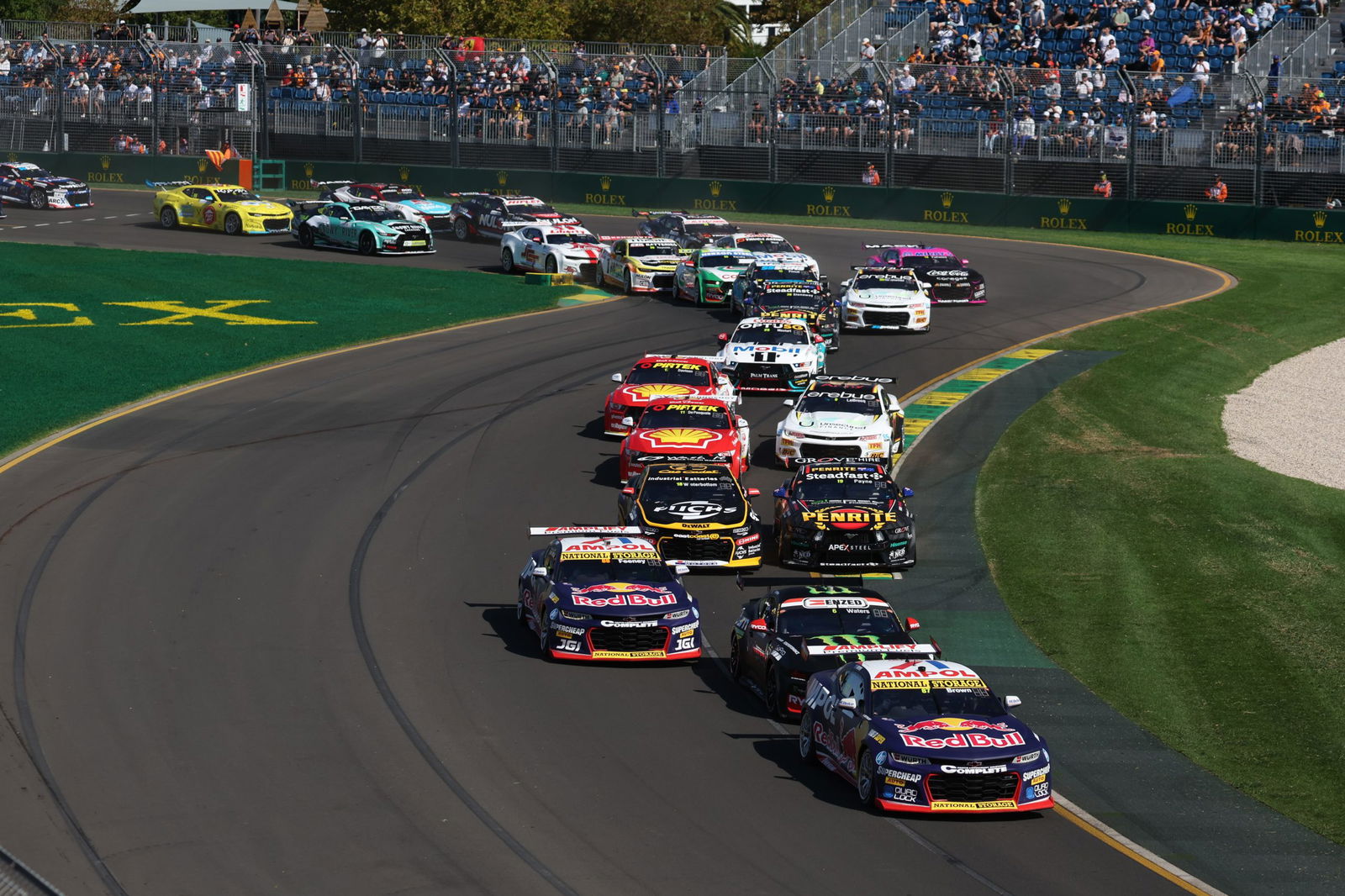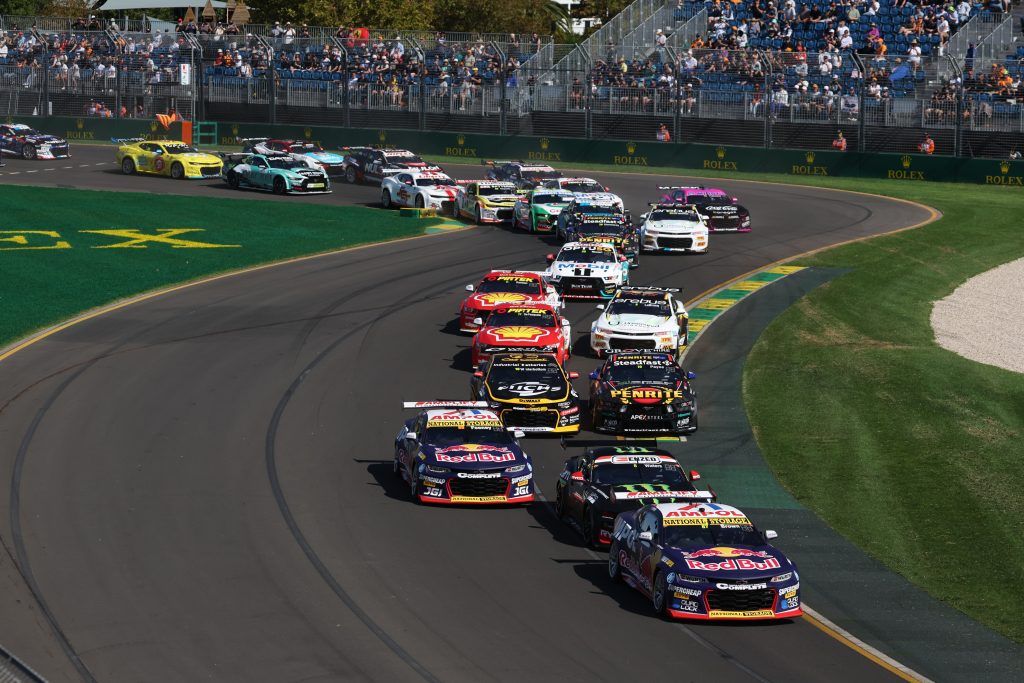

Supercars was the clear fourth-ranked offering at Albert Park, at least based on scheduling and paddock allocation, including being relegated from the secondary pit lane in favour of the FIA Formula 2 Championship.
Then came the revelation that F2 was not using that pit lane for its stops anyway, but the local touring car competition had to resort to pure sprints because its ‘garages’ were located in the infield.
Yet, after all of that, the racing was arguably some of the most entertaining which the category has put on for some time, although those who variously ended up on the grass, in the gravel, and/or against a wall, might disagree.
Triple Eight Race Engineering’s Broc Feeney, who won two of the four races, made a compelling pitch for staying at the AGP when he observed after the Thursday encounter that a big crowd had shown up.
While the 65,030 which the Australian Grand Prix Corporation reported for Thursday was only about half of the six-figure attendances for each of the following three days, it is a bigger number than any other SuperSprint event totals over three days, and essentially matches last year’s Sandown 500 total of 68,724 – a figure which Supercars was proud of.
That the AGP crowd would dwarf that of the Sandown 500 is, of course, hardly a shock or a disgrace, but there is certainly logic in attaching one’s category to the boom which Formula 1 is enjoying.
However, as Feeney pointed out, the 65,030 people who made their way into Albert Park on a weekday, that was not a Friday, were presumably there to see Supercars, given it had five sessions and neither F1, F2, nor F3 were on-track at all.
“I mean, obviously talk about how much we can pull in; just have a look at how many fans are here today, to be honest,” said the winner of the aforementioned Sandown 500.
Walkinshaw Andretti United co-owner Ryan Walkinshaw, while joining drivers in expressing his disappointment at the Supercars paddock being closed to most fans, “certainly” hopes to be racing at Albert Park again in 2025, which would require a new contract.
“We’ve got big international partners like Mobil 1, for example, that activate quite heavily here and they’ve got their relationship with Formula 1 teams as well,” he noted.
Walkinshaw did, though, hint at changes in the works for how Supercars is accommodated at the circuit, which was further away from optimal this year (noting transporters had already been moved to the outfield last year to make space for F2 and Formula 3) but not as bad in practice as had been feared.
Then there is the fact that Formula 1 teams want to see the Supercars when they come to Australia, according to event CEO Travis Auld, a claim which was given weight by F1 CEO Stefano Domenicali’s stated support during the weekend for taking the category to other grands prix.
Supercars is certainly a different entertainment offering to the various open-wheelers, and one only had to hear the reaction to the Matt Payne-Cam Waters crash – and subsequent remonstration – to observe that the crowd was engaged by the rough-and-tumble which unfolded.
On the other hand, the inescapable fact is that the paddock arrangements are a long way from optimal for the teams, and now the format is particularly compromised given there is no capacity for compulsory pit stops (although some liked that).
Furthermore, while the conditions all weekend were almost ideal for spectators, any weather change during the races could well have turning them into ridiculously short contests – would they have counted for points at all? – given a red flag would have been necessary to facilitate changes from wets to slicks or vice versa.
There is also always the possibility that incidents in the preceding sessions give the Supercars very little time for their races to start with, as was the case particularly in the Friday encounter in 2023.
What do you think? Should Supercars return to the Australian Grand Prix? Cast your vote in this week’s Pirtek Poll.



















Discussion about this post